

This chapter provides information to help coaches plan and implement flexibility programs for their athletes. The goal of the following information is to provide an extensive list of exercises and methodologies so that coaches and trainers can apply appropriate exercises and program designs depending on the level and specific goals of the athletes with whom the coach works. Remember to take into account the science behind flexibility training as outlined in the previous chapter when designing and implementing your programs.
Table 6.1: Dynamic flexibility (linear & lateral).
| Daily Dynamic Warm-Up for Junior Player | Distance | Coaching Cues |
| Heel and Toe Walks w/arm rotations | Doubles line to doubles line | Each step try and increase height |
| Knee-to-Chest Walk | Doubles line to doubles line | Pull knee to chest while standing on the toes of opposite leg opposite |
| Walking uad Stretch | Doubles line to doubles line | Grab opposite toe with opposite hand and while pushing up on opposite toes and hold 2 seconds. Focus on upper body position |
| Hamstring Handwalk | Doubles line to doubles line | Start in extended push-up position and walk feet towards hands |
| Straight Leg Walk | Doubles line to doubles line | Focus on tall body position, with transverse abdominous activation, shoulder back and strong core position |
| Walking Lung w/arm hug | Doubles line to doubles line | Focus on stable foot plant with solid upper body position focusing on increasing stretch of the hip flexors |
| Hip Handwalk (crawl) | Doubles line to doubles line | Walk feet out and then follow with hands focusing on keeping body position low |
| Lateral Lunge | Doubles line to doubles line | Lateral lunge aiming to maintain straight line from patella through the same hip/glute |
| High Knee Skip | Doubles line to doubles line | Doubles line to doubles line Focus on height and explosion on each skip |
| 60%, 70%, 80% 90% sprint | Doubles line to doubles line | Doubles line to doubles line Focus on increasing speed on each of the four repetition |
Table 6.2: Junior dynamic warm-up.
Table 6.3: National/collegiate junior warm-up.
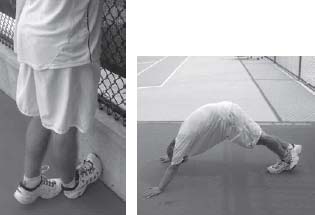
Figure 6.1: Calf stretch.
Major Muscles: Gastrocnemius, Soleus
Level of Exercise: Beginner, Intermediate, Advanced, Professional
Coaching Cues: Lean forward with body while pushing backward with heel to increase stretch.
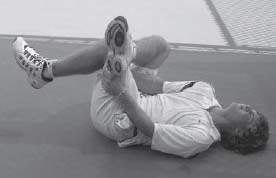
Figure 6.2: Glute stretch.
Major Muscles: Gluteus Maximus, Gluteus Medius, Gluteus Minimus
Level of Exercise: Beginner, Intermediate, Advanced, Professional
Coaching Cues: Relax head and neck and pull on opposite hamstring group to increase stretch.
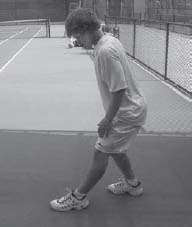
Figure 6.3: Standing hamstring stretch.
Major Muscles: Hamstring group ( Bicep Femoris, Semitendinosus, Semimembranosus), Popliteus
Level of Exercise: Beginner, Intermediate, Advanced, Professional
Coaching Cues: Slight knee bend and anterior pelvic tilt to increase the active stretch on the hamstring.
Figure 6.4: Standing hip flexor stretch.
Major Muscles: Psoas, Illiacus, Quadricep Group (Rectus Femoris, Vastus Intermedius, Vastus Medialis, Vastus Lateralis)
Level of Exercise: Beginner, Intermediate, Advanced, Professional
Coaching Cues: Muscle being stretched is positioned as the back leg and have the athlete focus on pushing the hip in the anterior direction.
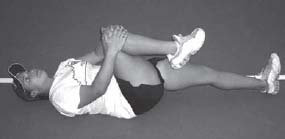
Figure 6.5: Single leg lower body stretch.
Major Muscles: Quadratus Lumborum, Multifidus
Level of Exercise: Beginner, Intermediate, Advanced, Professional
Coaching Cues: Relax head and neck and pull bent leg towards chest.
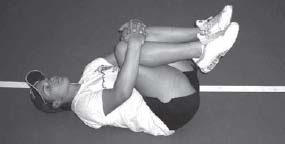
Figure 6.6: Two leg lower body stretch.
Major Muscles: Quadratus Lumborum, Multifidus
Level of Exercise: Beginner, Intermediate, Advanced, Professional
Coaching Cues: Relax head and neck and pull both legs towards chest.
Figure 6.7: Scorpion stretch.
Major Muscles: Psoas, Illiacus, Obliques, Tensor Fasciae Latae
Level of Exercise: Beginner, Intermediate, Advanced, Professional
Coaching Cues: Slowly attempt to touch toe to opposite elbow.
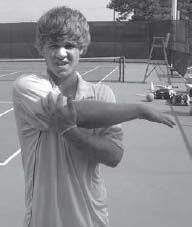
Figure 6.8: Shoulder stretch.
Major Muscles: Posterior Deltoid, Supraspinatus, Infraspinatus, Teres Minor, Latissimus Dorsi
Level of Exercise: Beginner, Intermediate, Advanced, Professional
Coaching Cues: Relax head and neck and slowly stretch arm across the body.
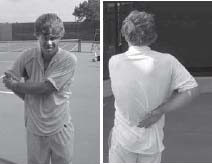
Figure 6.9: Posterior shoulder stretch.
Major Muscles: Posterior and Medial Deltoid, Infraspinatus, Teres Minor
Level of Exercise: Advanced, Professional
Coaching Cues: Relax head and neck and gently place top of hand on lower back. With other hand gently apply an active stretch behind the elbow gently increasing the stretch.
Figure 6.10: Sit and reach.
Major Muscles: Hamstring group (Bicep Femoris, Semitendinosus, Semimembranosus), Quadratus Lumborum, Multifidus, Popliteus
Level of Exercise: Beginner, Intermediate, Advanced, Professional
Coaching Cues: Slowly reach arms toward the toes to the point of stretch.
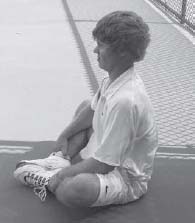
Figure 6.11: Groin stretch.
Major Muscles: Adductor Muscles (Longus and Brevis), Pectineus and Gracilis
Level of Exercise: Beginner, Intermediate, Advanced, Professional
Coaching Cues: While seated place heels together and slowly pull heels towards the body. For an advanced stretch slowly push elbows down gently on inside of legs.
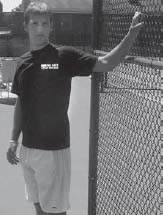
Figure 6.12: Pec stretch.
Major Muscles: Pectoralis Major, Pectoralis Minor, Subclavius
Level of Exercise: Beginner, Intermediate, Advanced, Professional
Coaching Cues: Place arm against fence (or wall) and slowly turn away from fence while maintaining original arm position.
Figure 6.13: Tricep stretch.
Major Muscles: Tricep Brachii and Anconeus
Level of Exercise: Beginner, Intermediate, Advanced, Professional
Coaching Cues: Reach hand behind the head by bending elbow attempting to reach down the center of the back.
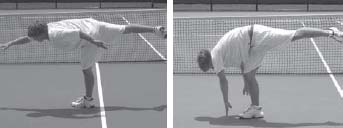
Figure 6.14: 1-Leg walking opposite.
Major Muscles: Hamstring group ( Bicep Femoris, Semitendinosus, Semimembranosus), Quadratus Lumborum, Multifidus, Gluteals, Popliteus
Level of Exercise: Intermediate, Advanced, Professional
Coaching Cues: As the athlete lowers their body they need to keep lower back and head straight. The body should look like a “T”.
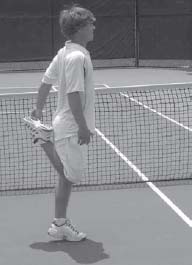
Figure 6.15: Walking quad stretch.
Major Muscles: Quadricep Group (Rectus Femoris, Vastus Medialis, Vastus Lateralis, Vastus Intermedius)
Level of Exercise: Intermediate, Advanced, Professional
Coaching Cues: The athlete needs to focus on maintain good upperbody position and pushing up on the opposite toe and holding at the top for two seconds.
Figure 6.16: A-skip.
Although A-skip is not considered a basic flexibility exercise, the benefit of using the A-skip during the warm-up is to help improve an athlete’s muscle firing pattern and motor-coordination.
Major Muscles: Majority of lower body muscles special emphasis on hip flexors
Level of Exercise: Intermediate, Advanced, Professional
Coaching Cues: Focus on maintaining tall body position and solid ground contact.
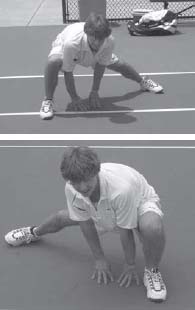
Figure 6.17: Gambetta lunge.
Major Muscles: Majority of lower body muscles
Level of Exercise: Intermediate, Advanced, Professional
Coaching Cues: Extend legs out as far as comfortable on a 45°-60° angle in front of the body. The hands are walked out following the feet while the athlete focuses on keeping his/her glutes low to the ground.
Figure 6.18: Hamstring march.
Major Muscles: Hamstring group (Bicep Femoris, Semitendinosus, Semimembranosus), Popliteus
Level of Exercise: Intermediate, Advanced, Professional
Coaching Cues: Extend one leg out straight as high as possible under control while keeping head, shoulders and back as straight as possible.
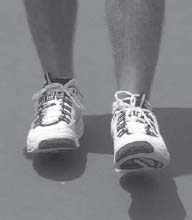
Figure 6.19: Heel walk.
Major Muscles: Anterior Tibialis, Peroneus Longus,
Level of Exercise: Intermediate, Advanced, Professional
Coaching Cues: Extend walk on the heels while pointing toes to the sky.
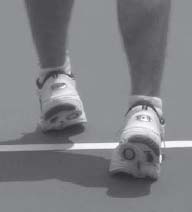
Figure 6.20: Toe walk.
Major Muscles: Gastrocnemius, Soleus, Tibialis Posterior, Plantaris
Level of Exercise: Beginner, Intermediate, Advanced, Professional
Coaching Cues: Slowly walk on your toes and holding the top position for 1-2 seconds.
Figure 6.21: Hamstring handwalk (“inchworm”).
Major Muscles: Hamstring group (Bicep Femoris, Semitendinosus, Semimembranosus), Gastrocnemius, Soleus
Level of Exercise: Advanced, Professional
Coaching Cues: Start with hands out in front of the body and slowly walk the feet up to the hands while attempting to keep legs as straight as possible (without locking the knees).
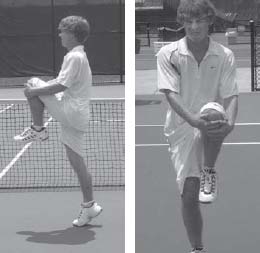
Figure 6.22: Knee-to-chest walk.
Major Muscles: Quadratus Lumborum, Multifidus
Level of Exercise: Intermediate, Advanced, Professional
Coaching Cues: After taking a step forward slowly pull knee up to chest and hold position between 1-2 seconds.

Figure 6.23: Lateral lunge.
Major Muscles: Adductor Longus, Adductor Brevis, Pectineus, Adductor Magnus, Gracilis
Level of Exercise: Intermediate, Advanced, Professional
Coaching Cues: After taking a large lateral step slowly push hip out over the outstretched leg while maintain a solid upper body position.
Figure 6.24: Walking lunge.
Major Muscles: Majority of lower body muscles
Level of Exercise: Intermediate, Advanced, Professional
Coaching Cues: Perform a standard lunge focused on maintaining solid core position and increasing hip flexor ROM on each step.

Figure 6.25: Lunge with rotation.
Major Muscles: Majority of lower body muscles
Level of Exercise: Advanced, Professional
Coaching Cues: Perform a standard lunge focused on maintaining solid core position and increasing hip flexor ROM on each step. While lowering into strong lunge position slowly rotate at the waist to increase rotational ROM.

Table 6.4: Daily flexibility guidelines.
Adding variety to an athlete’s flexibility program is important for many reasons; but when it comes to flexibility training most athletes find this the most tedious and monotonous portion of training for competitive tennis. Adding hurdle training to a program is a great training tool to improve ROM while providing variety to the program. Hurdle training involves the athlete walking or skipping over hurdles in a controlled manner which improves hip flexor ROM. The importance of hip flexor ROM can not be underestimated due the fact that tennis movements require athletes to be in a low crouched position which actually causes the muscles that flex the hip to shorten, which reduces ROM. Therefore, specific emphasis on improving hip flexor ROM is important and hurdle drills are a great method to accomplish this. The following hurdle mobility table provides a list of different hurdle mobility exercises that would be appropriate for tennis athletes. These exercises can be performed either before or after training and on recovery days (Table 6.5).
Table 6.5: Hurdle mobility exercises.